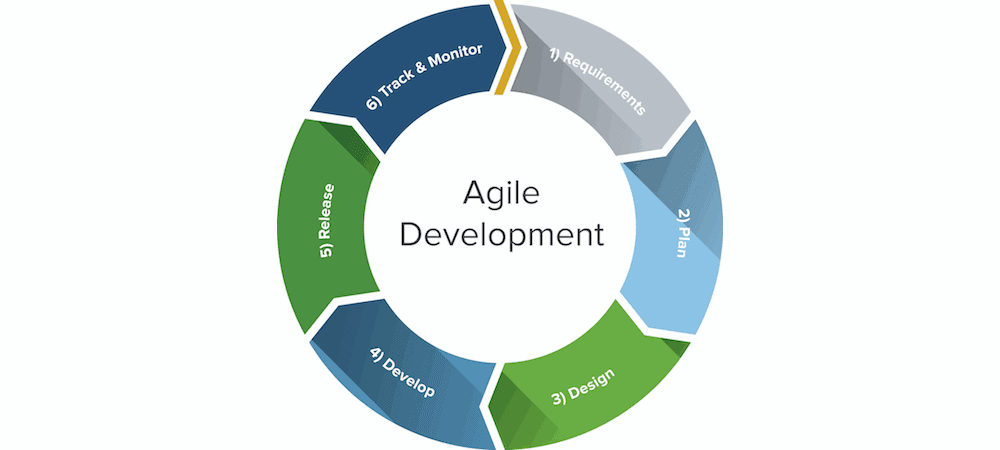Software development is a complex process. By choosing the right methodology, the developer can achieve the requested results, communicate with the client, and minimize the number of errors.
One of the most popular methodologies is agile. Let’s look a little closer at what agile software development is all about.
What is agile?
This project management methodology focuses on delivering and continuously improving small parts of the software instead of delivering the entire app by the deadline.
When agile methodology is applied, the software goes through the development process. You can’t always predict the outcome, but you can make changes along the way to achieve the requested goal.
During Agile custom software development, the client is part of the development team. Developers interact with the client each step of the way to ensure 100% satisfaction and understanding of the requirements.
Agile is an approach that involves incremental delivery, team collaboration, and continual planning. Unlike another popular methodology, waterfall, the results are provided in pieces throughout the project, rather than in bulk at the end.
Different types of agile methodology exist:
- Scrum
- Lean
- Kanban
- DSDM (Dynamic Systems Development Method)
- XP (Extreme Programming)
Advantages of agile software development
Many software developers are taking advantage of the agile methodology since it allows clear communication and close collaboration. Let’s examine the advantages of this approach.
1. Transparency
Since clients are involved in virtually every step of software development, the entire process is 100% transparent. You can catch the error as soon as it appears and before it can affect the rest of the product.
Meanwhile, this transparency requires the client to show an understanding of the development process and find time to collaborate closely.
2. Predictability
By using schedule sprints (usually one to four weeks), new steps of development are achieved quickly. The client always knows when to expect the next stage of the project to be completed. Thus, it’s possible to predict the time when software becomes available. Usually, agile creates an opportunity for an early release.
3. Clear costs
Since each sprint’s duration is fixed, it’s easier to predict the cost of the software development project, especially if developers are paid on an hourly basis. A client receives an estimate before each sprint, which improves the decision-making process and clarifies the budget.
4. Flexibility
Since the project is delivered in parts, it’s almost never too late to make changes. Clients and developers work together slowly to understand what needs to be tweaked at which stage. It’s possible to improve the product and change priorities when necessary.
Again, this approach requires the client to be highly involved in the process. This isn’t always preferable to some companies. However, it allows the project to have a higher ROI and lower budget.
5. Higher quality
Since the project is broken down into manageable units, the team can focus on higher-quality development, testing, communication, and collaboration. Frequent testing and reviewing during each iteration allows for discovering errors timely and improving the project’s quality.
The takeaway
Even though the agile approach is almost 20 years old, it’s still one of the most preferable software development methodologies. The key to using agile is a regular collaboration between the developer and the client.
